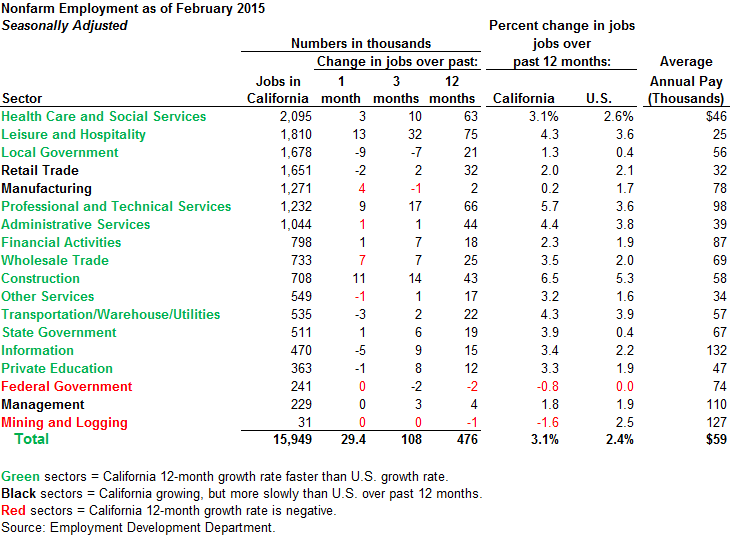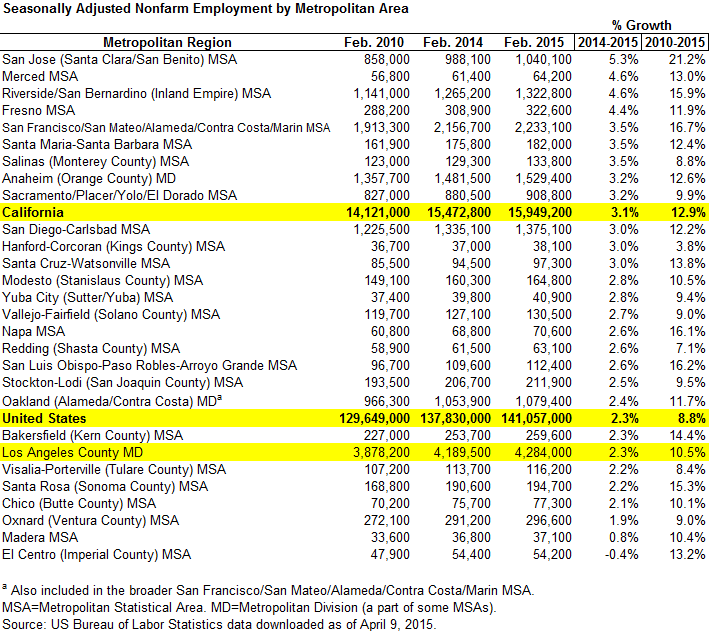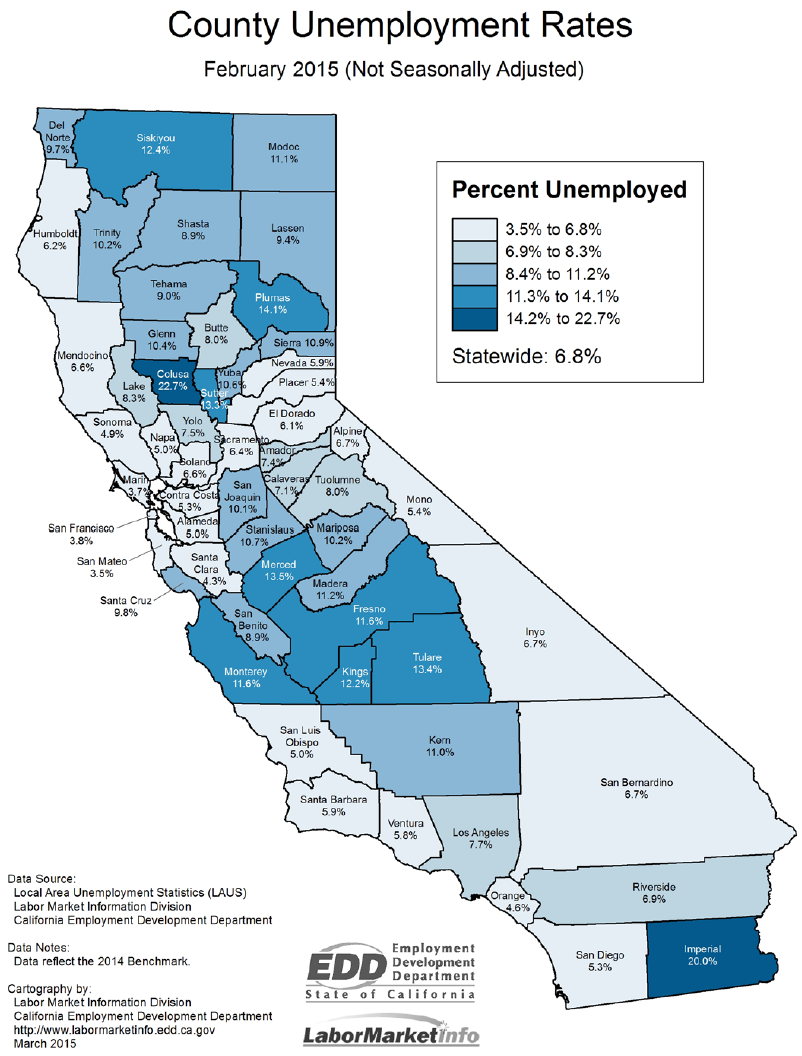(Updated on April 9, 2015, to reflect changes to metropolitan area employment data.)
The state's Employment Development Department (EDD) has released preliminary jobs data for the month of February 2015. Nonfarm payroll jobs in California increased by 29,400 in February above revised January figures. The official unemployment rate for the state fell to 6.7% in February (down from 7.0% in revised January figures). In California, the unemployment rate remains over a percentage point above the U.S.'s 5.5% unemployment rate for February. California's unemployment rate has fallen 1.3 percentage points from its revised 8.0% level in February 2014.
In most months, in presenting this monthly summary of the EDD report, we will present the following table displaying key employment trends in California by sector. (For more information on the sectors listed in green, black, and red, see this earlier blog post.)
California 12-Month Growth Rate Above U.S. in 13 of 18 Sectors Tracked. As shown above, 13 of the 18 sectors we track are colored green. This means that these sectors' job growth rates in California have been greater than in the U.S. as a whole over the past 12 months. Only 2 of the 18 sectors are colored red, signifying a contraction of jobs in that sector in California over the last 12 months. California's job growth is outpacing the U.S., with the number of nonfarm jobs in the state up 3.1% over the past 12 months, versus 2.4% for the U.S. as a whole.
Construction Job Growth Likely Not Driven by New Residential Construction. New residential building permits in the state have been stagnant, yet the rate of job growth in construction has been the fastest of any major job sector in California over the last 12 months. Permitted nonresidential building activity, however, was up 27% from 2013 to 2014, and permitted residential alteration was up 17% (both in dollar terms). Nonresidential building and alterations of residences, therefore, seem to be driving construction job growth, rather than new residential building. More new residential construction in coastal counties would be helpful to prevent home prices and rents from becoming even more unaffordable.
Professional and Technical Services An Important Sector for California. Over the past year, professional and technical jobs are up 5.7% statewide. According to non-seasonally-adjusted data, this sector is being driven by growth in computer systems and consulting services. These are important exportable sectors for California, with relatively high pay. Technology jobs are more concentrated in the Bay Area than Los Angeles, which has been one reason for the Bay Area doing relatively better. As shown below, seasonally-adjusted job growth in Los Angeles County has lagged the state as a whole. (The data below were taken from the U.S. Bureau of Labor Statistics website on the morning of April 9, reflecting adjustments to some data posted earlier on the EDD website and in an earlier version of this post.)
Unemployment Rates Vary Significantly Across the State. Unemployment rates continue to vary significantly across the state. On a non-seasonally adjusted basis, the state's unemployment rate was 6.8% in February (the official unemployment rate of 6.7% cited above reflects seasonal adjustments, as do most other data we cite in this post). This measure of unemployment varied from 3.5% in San Mateo County to 22.7% in Colusa County. In general, the lowest unemployment rates are in the Bay Area and Orange County. On a non-seasonally adjusted basis, Los Angeles County's unemployment rate was 7.7% in February (7.8% seasonally adjusted). Unemployment rates in the Inland Empire now are about the same as the state as a whole, marking significant progress for that region compared to prior years. The EDD map below illustrates the differences in unemployment rates across the state.
Over the past year, non-seasonally adjusted unemployment rates have dropped statewide, but at varying speeds. In the southern part of the state, Imperial County's unemployment rate dropped only 0.3 percentage points (from 20.3% in February 2014 to 20.0% in February 2015). At the northern border, Modoc County's unemployment rate dropped 3.1 percentage points (from 14.2% in February 2014 to 11.1% in February 2015). In the EDD map below, lighter shades indicate a faster drop in the unemployment rate over the past year, as measured in percentage points, while darker shades indicate a slower drop.




